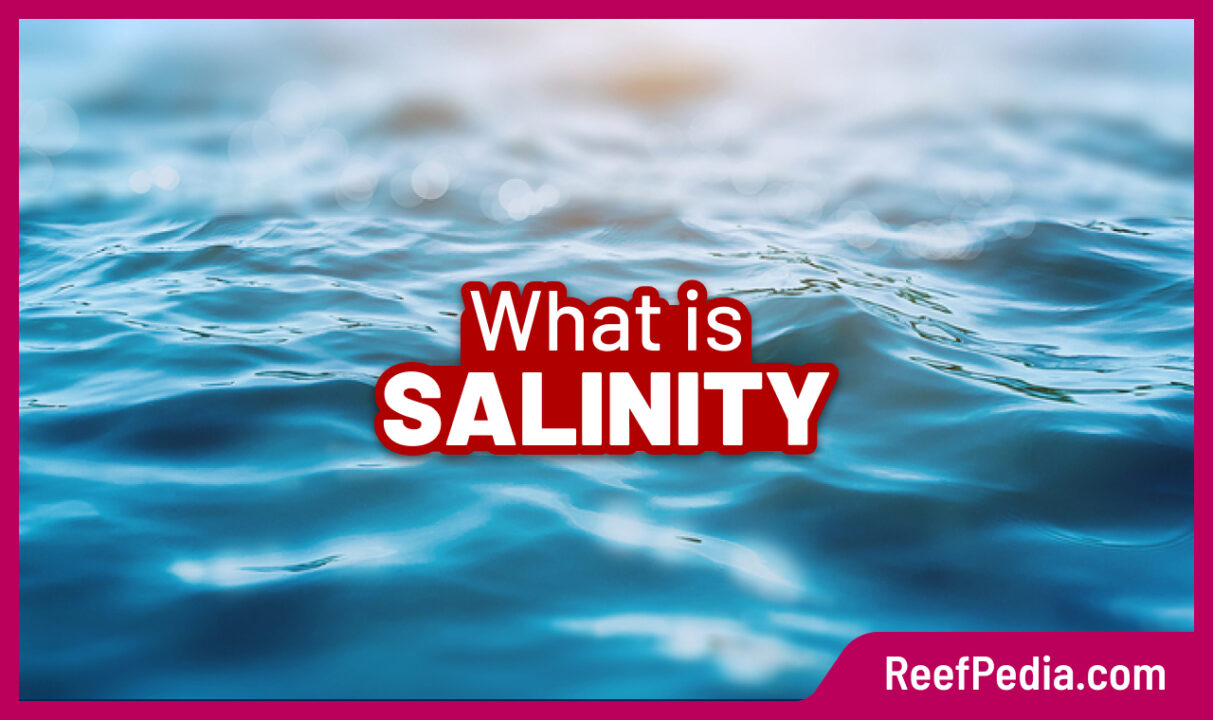If you are new to reef aquariums, it’s important to understand what salinity is and what the best salinity levels are for your reef tank, and why it’s crucial to measure salinity in your reef aquarium. Read this short guide to get all the essential information.
Table of Contents
What is Salinity?
Salinity refers to the overall mineral content of sea water, measured in grams per kilogram of natural sea water. In simple terms, it’s the minerals dissolved in the water.
In natural sea water, you’ll find the following main ingredients:
- Sodium chloride: 77.8%
- Magnesium chloride: 10.90%
- Magnesium sulfate: 4.70%
- Calcium sulfate: 3.60%
- Potassium sulfate: 2.50%
- Calcium carbonate: 0.35%
- Magnesium bromide: 0.22%
Together, these components make up over 99.5% of sea water, with the remainder consisting of trace elements (microelements).
Sea Salt Composition
The primary components of sea salt include:
- Sodium chloride: This is the main component and is commonly known as “table salt.” It makes up the majority of sea salt’s mass.
- Magnesium: The second most abundant component in sea salt. Magnesium ions are essential for various biological processes in marine organisms.
- Potassium: Another key ingredient in sea salt, crucial for cellular functions.
- Calcium: Crucial for organisms that build skeletons and shells, such as corals.
- Bicarbonates and carbonates: These ions play a vital role in regulating seawater pH and are important for coral skeleton formation.
- Sulfate: Another important anion found in sea salt.
In addition to these main components, sea salt contains trace amounts of many other minerals and elements, including bromine, iodine, strontium, molybdenum, and more. These trace elements, even in small quantities, can be essential for the health and functioning of certain marine organisms.
How to maintain saltwater aquarium salinity
The simplest methods to maintain salinity are as follows:
- Top up with RO (Reverse Osmosis) freshwater to replace the evaporated water. At this basic level, remember that when water evaporates, you add RO fresh water, which is tap water filtered through a reverse osmosis filter.
- During a saltwater change, two aspects are important: 1. keeping current salinity levels – prepare saltwater with the same salinity as the aquarium water has and 2. how much salt should be replaced – replace the same amount of water during the change.
I’ll add a tip based on my experience working with beginner reef aquarists. When you start using a salinity measuring device like a refractometer, make sure to learn how to use it properly. If you test the water and notice a change in salinity levels in your saltwater aquarium, before making any adjustments – which I do not advise – you may assume that your results are wrong and you should re-test and double-check the salinity measurement.
To learn more about maintaining salinity in a saltwater aquarium, how to lower or raise it in a reef tank, and how to keep salinity stable, you can refer to this article [link here].
Salinity Levels in Seawater
This table shows salinity levels in natural seawater conditions.
|
Salinity |
Seawater type |
|
34 – 36 ppt |
World Ocean |
|
35 ppt |
Lake Eyre |
|
34 ppt |
Lough Hyne |
|
28 – 32 ppt |
Beaufort Sea |
The table below displays salinity levels in saltwater aquariums. These salinity levels are recommended by reef hobby aquarists.
|
Salinity |
Aquarium type |
|
31 ppt |
Fish only |
|
32 ppt |
Soft corals |
|
33 ppt |
Mixed reef |
|
35 ppt |
SPS dominated tank |
Other Reefers also asked
What should salinity be in saltwater tank
By keeping the salinity constant in a saltwater aquarium water, we maintain a given concentration of minerals in the seawater.
Check out this article to learn how to maintain saltwater aquarium salinity, how to reduce salinity or raise in reef tank, and how to keep salinity at a stable level here.
The desired salt level for reef tank typically falls between 32 and 35 parts per thousand (ppt). Lower salinity, around 31 ppt, is often better for soft corals and fish, while a salinity value of 35 ppt is suitable for hard corals, especially SPS corals.
Is a Salinity of 1.026 too High for a Reef Tank?
Salt concentrations in reef environments can vary depending on the location. Salinity ranging from 1.023 to 1.028 is generally considered safe and within the optimal range. However, experienced aquarists often maintain salinity levels between 1.024 and 1.026 (32 to 35 ppt), which is suitable for reef tanks.
About the author

Marek Protasewicz
Reefkeeping has been my passion for over 10 years now. I love learning. The hobby has taught me many valuable lessons, patience being the best example. Combining work and passion is my path. I run Crazy Coral, a marine aquarium shop, for a number of years. Building this business from the scratch I learnt from my own mistakes at a heavy cost.
Later I managed a project aimed at development of methods for quick growth of Corals in non-natural conditions. The project was carried out by Get Sales, Poland. Presently, I am responsible for distribution strategy at Reef Factory, of which I am a co-founder. The company produces smart devices for marine aquaristics. The last projects I have been involved in are Social Reef and ReefPedia.



